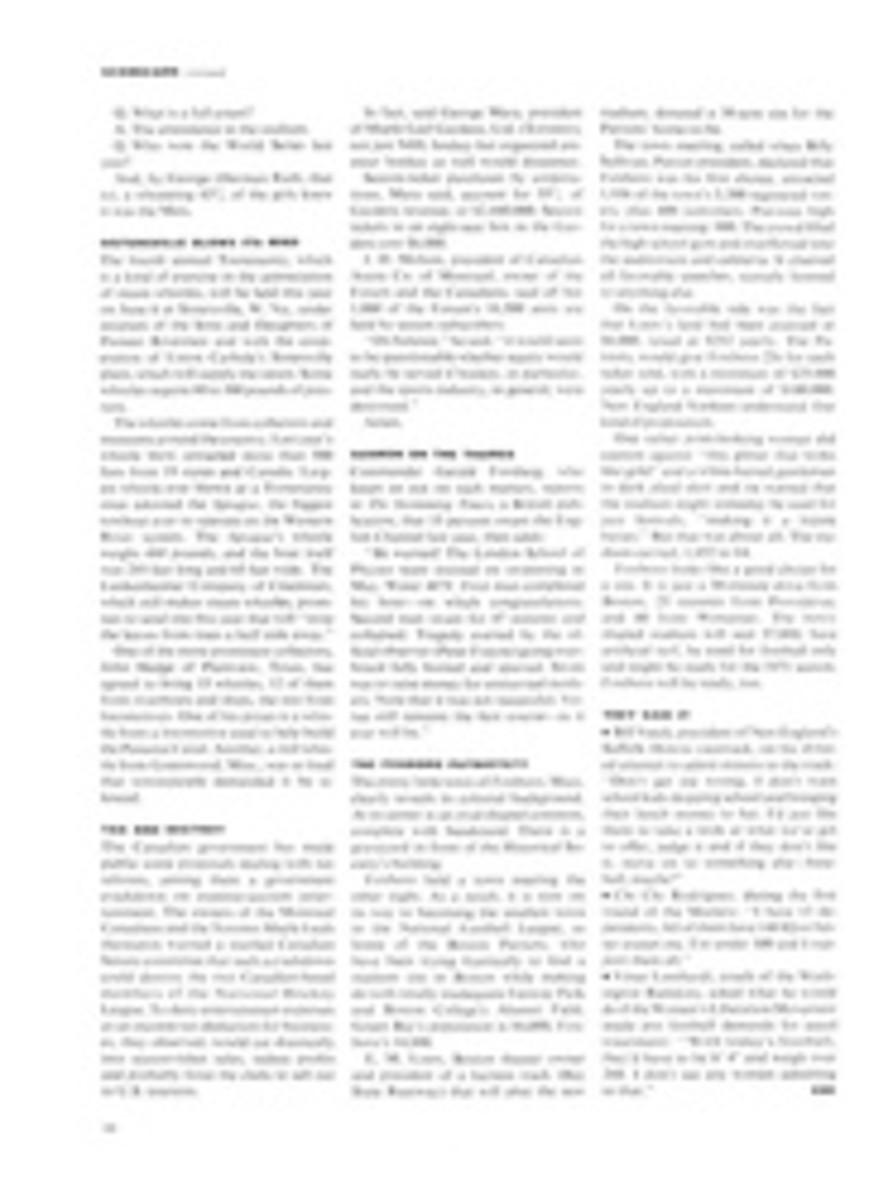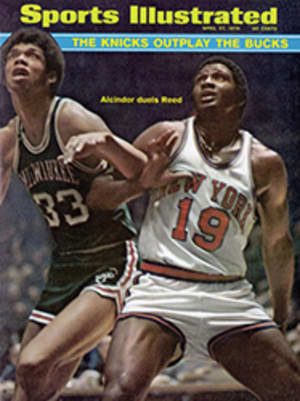
Suiting itself to the elegant setting, CBS did a stately job with the Masters
Golf is inherently dull," said Frank Chirkinian, the lucky Armenian of golf television, as he went out the door. So I expected his work for CBS on the Masters last week to be a riot of split screens, cutouts, fold-ins and all the little tricks that can be used to tart up the ritual.
What we got was some of the purest sports direction going, with the golf doing all the talking. I counted three split screens on Fat Sunday and only one (a double of Gary Player) that could pass for tricksy. Nor were there any little circles containing enlarged head of golfer bent over putt, or any "look at those hips" instructional filler.
Even the announcing was Spartan. If the commentators had talked to the golfers over breakfast, they kept it sternly to themselves. There was no folksy stuff about wives, no promotional stuff about country clubs, just the hole and nothing but the hole: how it played yesterday and how it looks today, Henry. ("Very challenging, indeed.")
It isn't every tournament that would yield to these dust-dry tactics. You would die of melancholy if the Okefenokee Open were treated so puritanically. But the beauty of the Augusta National course, and the preternatural dignity of the event, produce a rare mellowness, like boating on the Thames in your straw hat. And when the old gaffers in their green coats wolf up precious commercial time after the match congratulating each other and praising their own tournament to distraction, it does not, as you would expect, bore the bejabbers out of you, but fills you instead with a deep, dozy peace. The stuffiness of the Masters Committee members and their integrity are inseparable, and the aristocratic good taste of the broadcasting is partly their doing—right down to approval of the camera placements and the rationing of commercials.
On the execution side, CBS had a pretty good tournament. Saturday was slapdash, with less time and more players to worry about, and in the confusion Casper was referred to as Player at the 17th—a tribute, I suppose, to our most anonymous superstar. But Sunday was something else.
Chirkinian is ruthless about sticking to the leaders, and the tournament played into his hands by batching them together. The result was a broadcaster's dream—a story, rather than random notes for one. At that, some key shots at 14 were missed and an important drive by Littler was blurred by a meaningless putt of Nicklaus'—a rare lapse into Watch-the-Celebrity.
I mention these slips in no spirit of roasting, but to indicate the near impossibility of perfection in this form. The director has 20-plus cameras to nurse, all of which may be blank of interest at one moment, full the next. The announcers often work half blind, relying on bush telegraph and small black-and-white monitors that scarcely know rough from fairway and that have a fiendish capacity for picking up glare. This accounts for such things as announcers sometimes saying in moments of panic, "We're told he's putting his wood back," when it is there for all to see—there is no "told" about it.
On a scorecard of key shots brought back alive, CBS totaled high. By covering so many holes—13 through 18—they were able to dispense with the grim stream of losers holing out, which so often burdens the first half hour of TV golf. Chirkinian buries the losers without a trace: you don't even know they were there. On the vexed question of commentary, he has hired six mixed voices, which does not necessarily make what they say more interesting, but does make them easier to put up with. It is nice to hear England's Henry Longhurst talking about a "nahsty bit of bare stuff" that the ball has landed in. And Bob Ferrier's burr on 13 suggests that there should always be at least one Scotchman along.
The Masters is CBS's only golf tournament until August and they treat it like the opening of Parliament. But there is another approach to live golf television, and it, too, merits study. ABC has a bigger bag and a different attitude. Because they will do 13 tournaments this year, a sustained personal interest in the players is vital. At the recent Jacksonville Open, I watched Bill Flemming compiling yards of interview tape on the chance that a scrap of color would shake loose. ABC likes to break the weekly monotony with splits and inserts. They also run swings in slow motion for the self-improvement crowd, and inevitably a couple of chip-shot commentaries from papa bear Byron Nelson. The result is lively but less concentrated than a Masters show.
Both networks agree that no one wants a game of putt-putt, and that following the ball in the air is a waste of time. In fact, Chuck Howard of ABC and Frank Chirkinian intone many of the same principles, almost word for word. But style is created by deviations from principle and there are some interesting ones. It might be worth taking a closer look at ABC's methods when they do the U.S. Open in June and are faced with a special occasion of their own. Meanwhile, their regular work should be viewed as part of a series, promoting golf in general and the PGA tour in particular, halfway between a major news event like the Masters and an outright entertainment show like the CBS Golf Classic. The Masters, of course, promotes nothing but its own celestial self.

